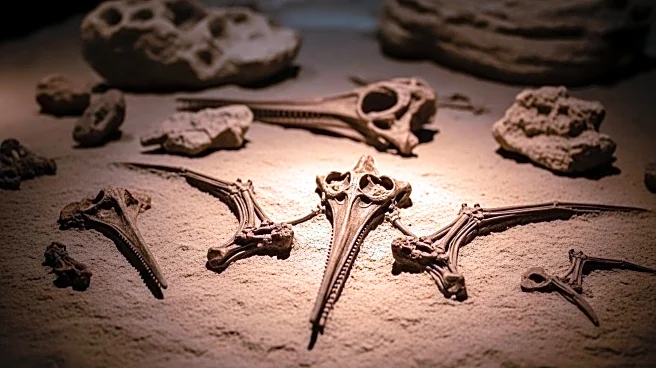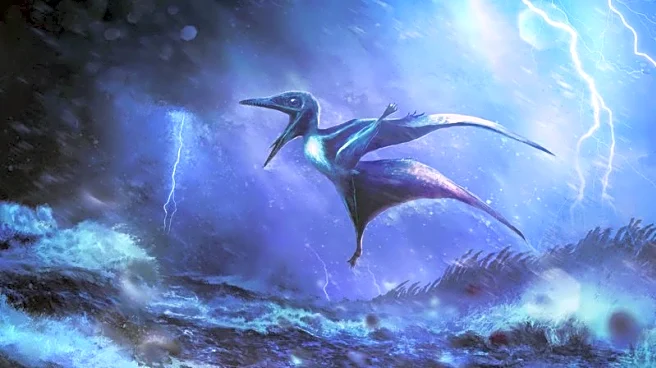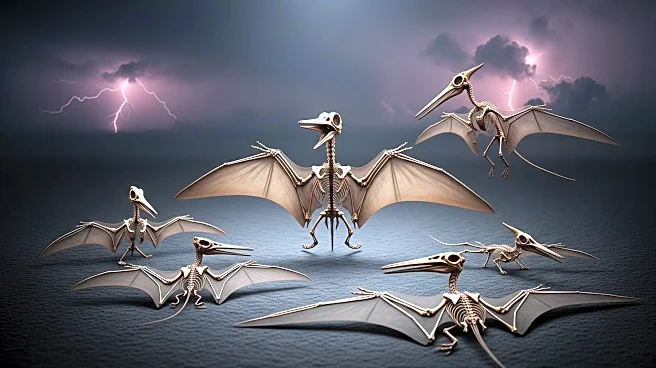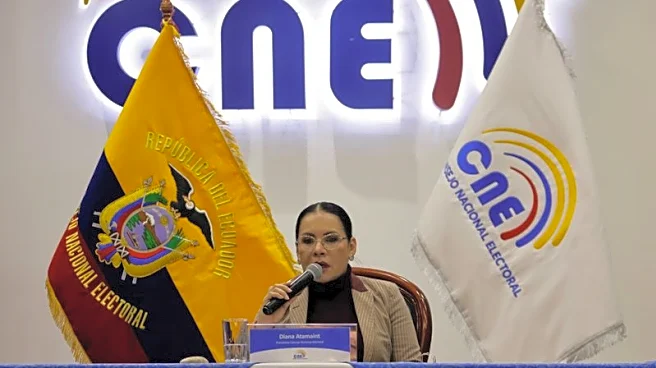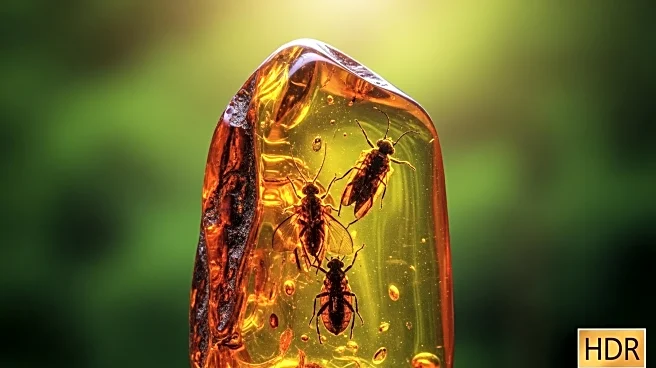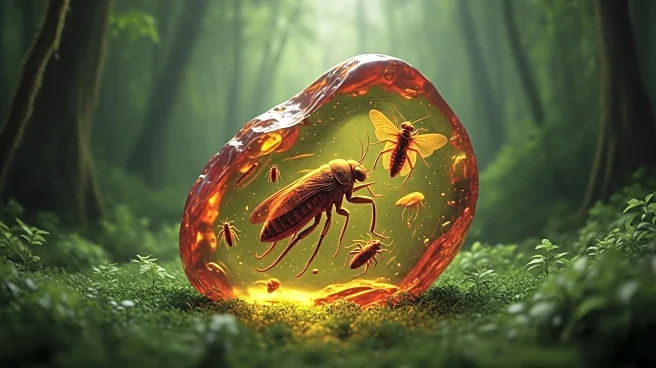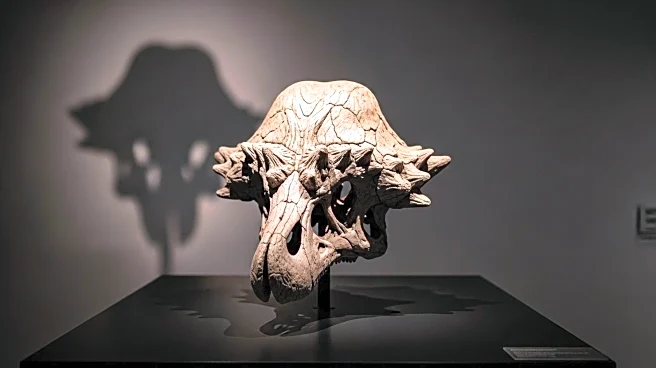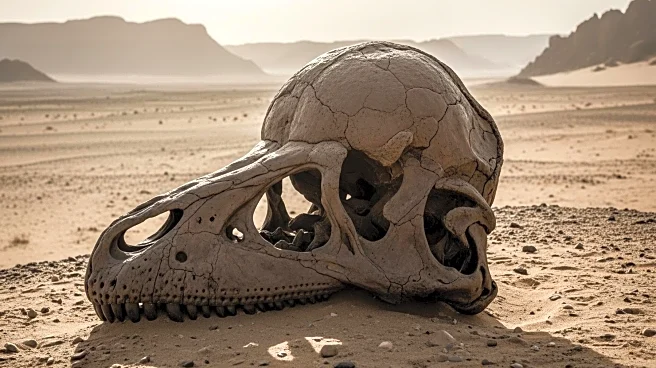What is the story about?
What's Happening?
For the first time, amber containing insects has been discovered in South America, specifically in the Hollín Formation of Ecuador's Oriente Basin. This amber dates back 118 million years, capturing a moment from the Cretaceous period when various insects such as flies and beetles became trapped in tree resin. The discovery was made during quarrying operations and is considered a major occurrence, as amber-encased insects are common in the northern hemisphere but had not been reported from Mesozoic South America until now. The resin is believed to have been secreted by araucariacean conifers, indicating these trees were dominant in the ancient Gondwanan rainforest.
Why It's Important?
This discovery provides valuable insights into the ecosystem of Gondwana, the southern supercontinent, during the Cretaceous period. The preservation of insects in amber offers a unique glimpse into the biodiversity and environmental conditions of ancient South America. It also contributes to the understanding of resin production and fossilization processes, which have implications for paleontology and geology. The findings could enhance knowledge about the evolution of resin-secreting trees and the ecological interactions between insects and their environment millions of years ago.
What's Next?
Further research and excavation in the Genoveva Quarry may uncover more amber specimens, potentially revealing additional details about the ancient ecosystem. Scientists may focus on identifying other preserved organisms, such as predators, to gain a more comprehensive understanding of the food web and ecological dynamics of the time. The study of these amber deposits could also lead to comparisons with similar findings in other parts of the world, contributing to global paleontological knowledge.
Beyond the Headlines
The discovery highlights the importance of preserving natural sites for scientific research, as quarrying operations can inadvertently lead to significant paleontological findings. It also underscores the role of interdisciplinary collaboration in uncovering and analyzing ancient biological and geological phenomena. The ethical considerations of balancing industrial activities with scientific exploration may become more prominent as similar discoveries are made.
AI Generated Content
Do you find this article useful?


